Squashes offer an incredible diversity of colours, shapes and textures. Some cucurbits delight with their flavours, while others please for ornamental qualities, such as ornamental gourds.
The loofah (Luffa Cylindrica) is one of those squashes considered inedible (although fruits can theoretically be cooked when very young). It is grown for its texture, which yields a genuine plant sponge or natural scrubbing glove.
This annual plant is also known as "liane torchon", referring to climbing habit. It produces large green fruits resembling courgettes, reaching 25–55 cm in length. Did you know it is entirely possible to grow it at home? Sowing simply requires a little patience and some appropriate care to succeed.
Follow our tutorial and tips to sow loofah successfully and make your own homemade plant sponges.
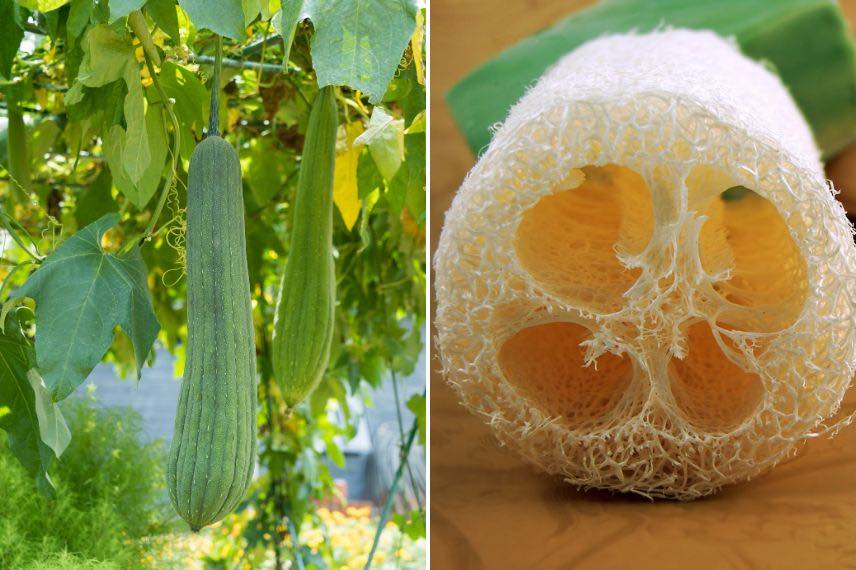
When to sow loofah?
Under cover
Sowing loofah under cover (in conservatory, greenhouse or cold frame) is done in early spring, between March and April.
This is the most effective technique to succeed with Luffa. Plants will benefit from more days of sunlight and warmth than when sown directly outdoors.
In situ
It is possible to sow loofah directly in garden. For this, wait until all risk of frost has passed (typically between late April and June depending on region).
With this method, monitor slug and snail attacks regularly, or protect plants preventively.
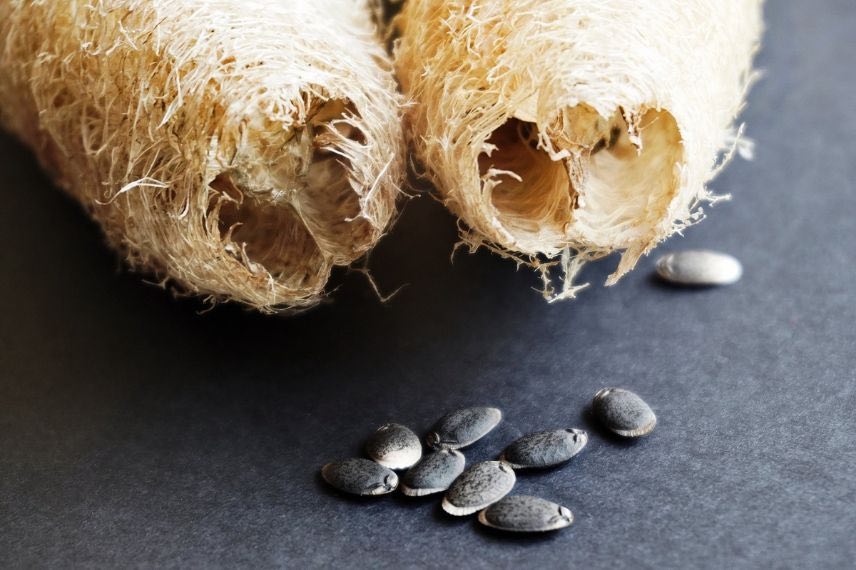
Where to plant loofah?
Like all squashes, loofah is a hungry plant. It likes substrates rich in organic matter but well drained (so they do not retain excess water around roots). It also prefers cool soils, meaning kept moist but without waterlogging.
Give it a sunny spot, essential for flowering and therefore fruiting. Loofah needs many days of sun and warmth. In regions with short summers, we therefore recommend hastening sowing under cover.
Allow plenty of space for loofah culture: plant reaches about 2.5 metres in height with 50 cm spread.
Choose a location that already has support (wire mesh, shed, arbour, pergola…). If not, provide sturdy staking or a trellis. Plant can grow along ground, but fruits may not form correctly, so we advise training it upwards.
Sowing steps
Sowing in buckets
- Fill buckets with light, free-draining substrate such as seed sowing compost (or horticultural compost mixed with garden soil and sand).
- Push seeds down with finger to about 2 cm depth.
- To keep surface soil constantly moist until germination, use a mister to avoid displacing seeds when watering.
Germination occurs in about 10 days, but can sometimes be slower and take several weeks depending on conditions.
Once seedlings have produced 2–3 true leaves (cotyledons not counted), thin out. Keep only most vigorous seedling in each container.
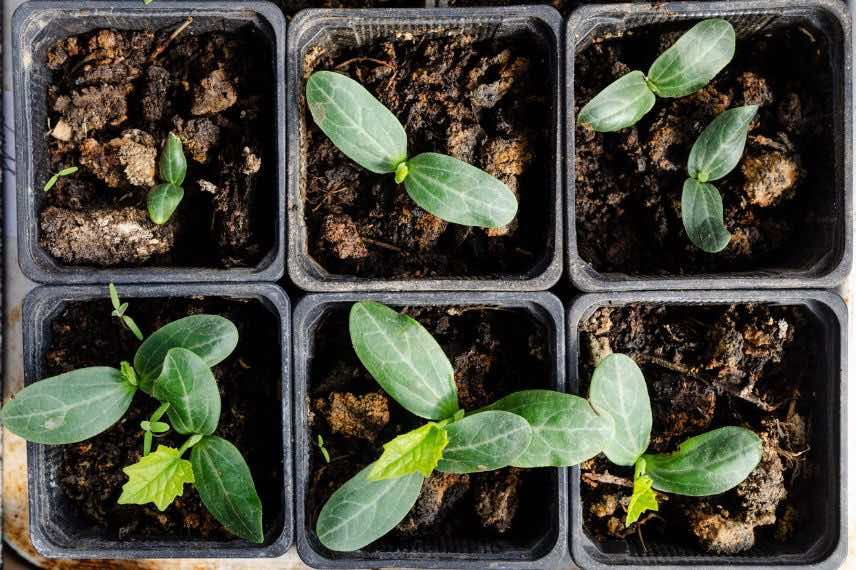
Sowing directly in ground
- Prepare soil receiving sowing: loosen soil to make it friable using a spade or broadfork. If soil is heavy and clayey, mix in sand to improve drainage. Weed, then rake soil with a rake to create a level surface. Add a handful of well-rotted compost or composted soil.
- Sow seeds in hills: make small hollows 2–3 cm deep by hand or using a dibber. Space at least 80 cm–1 metre apart. Water to moisten soil well.
- Place 3 loofah seeds in each hole, then cover with light substrate. Firm gently with fingers.
- Water with a fine spray to avoid moving seeds and keep soil moist until germination.
- If loofah is not near a support, install stakes beside holes or plan for trellising.
Once plants have developed 2–3 true leaves (cotyledons not counted), thin out leaving only most vigorous plant. Other plants can be replanted elsewhere in garden.
Install an organic mulch to better conserve soil moisture.
For more information, see our article on sowing in hills.
How to harvest, store and use loofah?
Harvest takes place after about 6 months. For sowing in April, harvest will therefore occur in autumn between October and November. Each plant normally produces 3–6 fruits.
Best to leave squashes to ripen as long as possible on plant, harvesting before first seasonal frosts. Peduncle will turn dry and woody, skin will begin to brown and split.
If climate becomes too humid at end of summer, harvest fruits and complete drying indoors in a dry, well-ventilated place.
To turn fruits into luffa sponge or scrubbing glove, several steps are required.
- Cut one end of squash, then shake out seeds (which can be kept for future sowing). Spoon may help.
- Remove flesh and peel squash (when fully dry, peel comes away easily by hand).
- Blanch in boiling water for few minutes.
- Cut sponge pieces to desired size.
- Allow to dry few additional days, preferably in sun.
Your luffa can be used in two ways.
- As plant sponge, for cleaning surfaces or washing dishes.
- As body exfoliant, like natural scrubbing glove. Once re-wetted, massage in circular motions directly on skin. Test first on less sensitive area.
After each use, rinse, wring out and allow sponge to dry thoroughly in air.
It can keep for several years. At end of life, when it begins to disintegrate, compost it, since it is biodegradable.
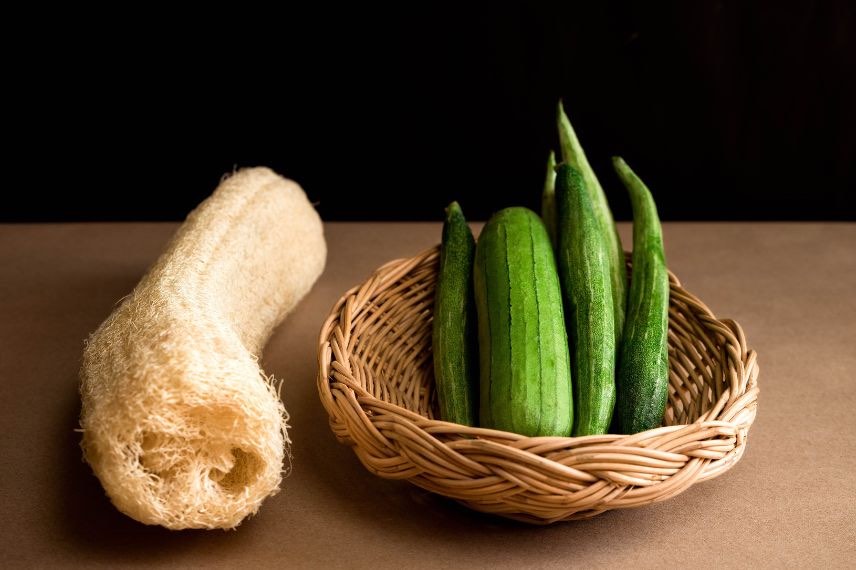
Required equipment
- Luffa Cylindrica seeds;
- seed sowing compost (or horticultural compost and garden soil mixed with sand);
- conventional or biodegradable buckets (or a planter) for sowing under cover;
- tools for soil preparation (spade, broadfork, weeding knife, fork or rake);
- dibber (facultative) for direct sowing;
- a handful of compost (facultative);
- sturdy stakes or a trellis at least 2 metres high (facultative if support already present for climbing);
- a mister or watering can with fine rose.































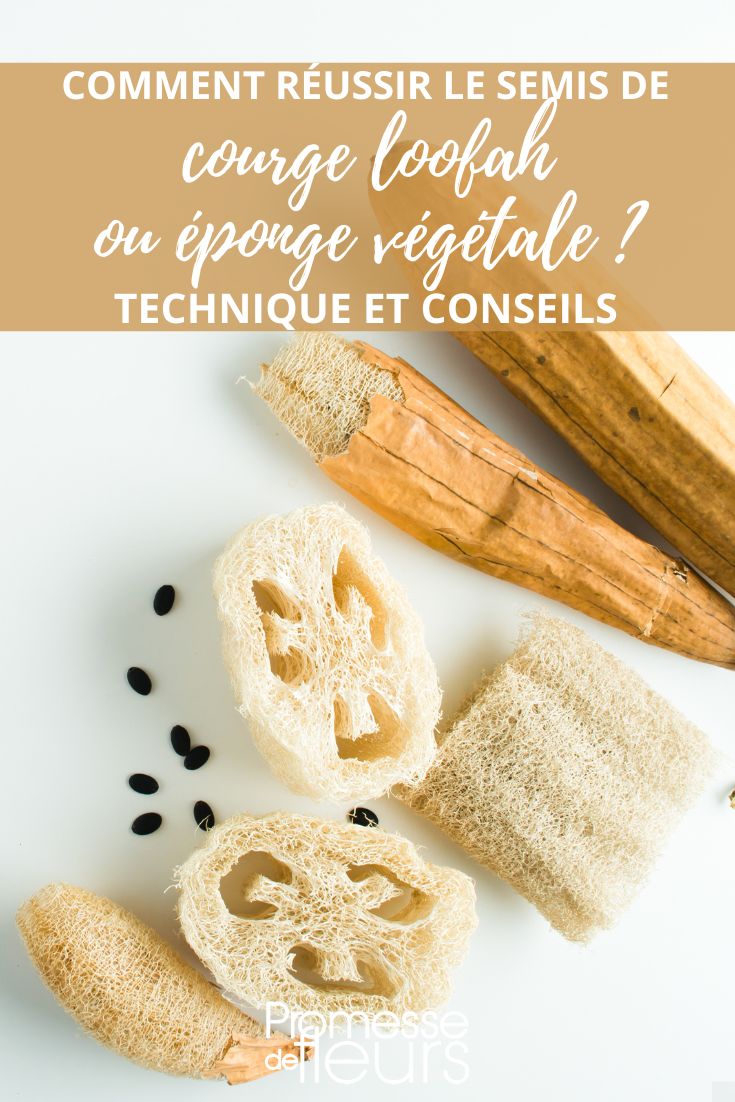
Comments